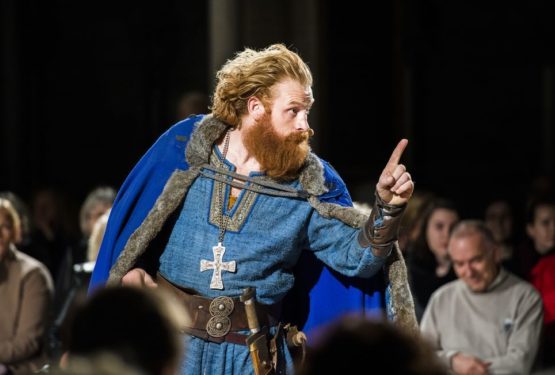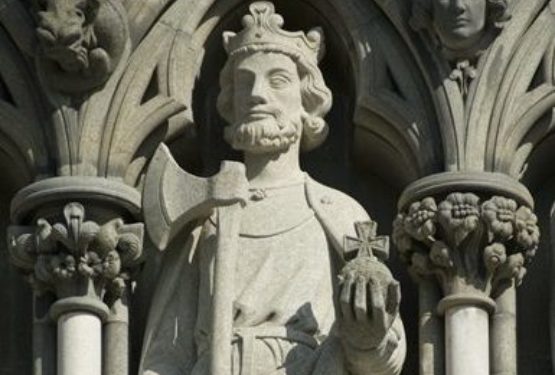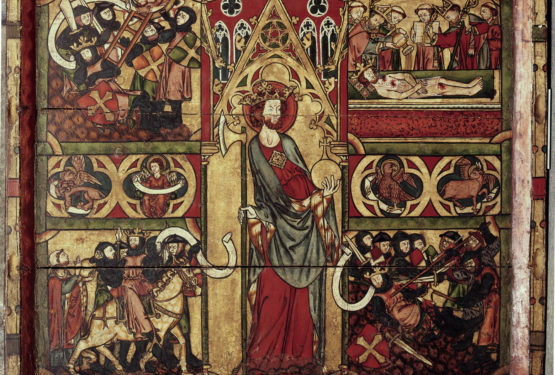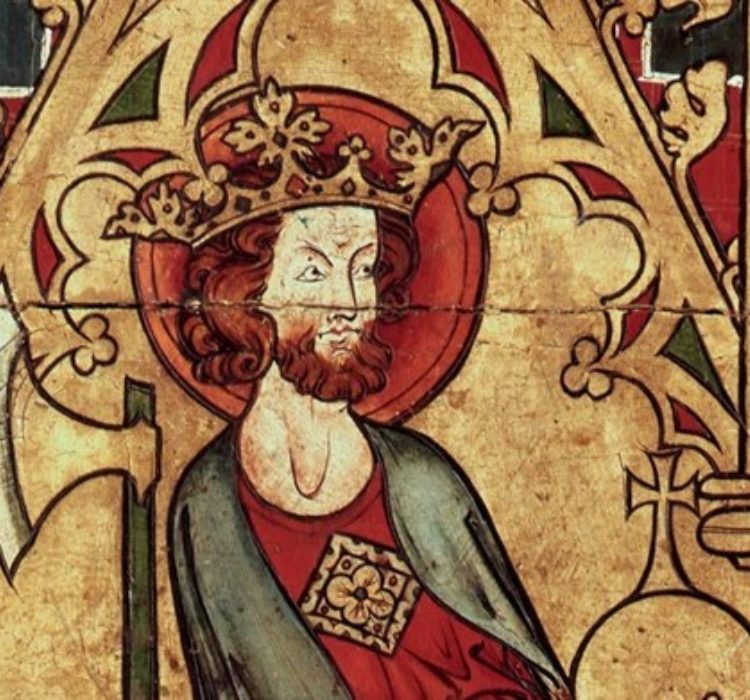Nidaros Cathedral was built over the burial site of St. Olav, the Viking king who became Norway's national saint.
Olav Haraldsson
The chieftain son, Olav Haraldsson, was born in the 990s and grew up in Ringerike. As a young boy, he went out “viking” (on sea expeditions). His travels took him to England, where he fought in the army of King Ethelred. In France, he spent two winters in Prince Richard's court in Normandy. During his stay in Normandy, Olav was tutored in the Christian faith, and he was baptised in Rouen in 1014.
The Battle of Stiklestad
Olav returned to Norway the following year, with the goal of uniting the country as a Christian kingdom under his rule. He justified his right to the throne by claiming he was a descendant of King Harald Hårfagre (Harald I Fairhair). The Unification of Norway was carried out with Olav’s royal tribute at the Øretinget assembly in 1016. He was the only king to be paid tribute by all the Norwegian “tings” or assemblies. Olav had brought priests and bishops from England who assisted in the conversion campaign and, in 1024, Christianity became the official religion in Norway.
Olav had powerful opponents among Norwegian noblemen, and his brutal actions made him unpopular. When King Knut of Denmark seized the country in 1028, Olav fled to his brother-in-law in Gardariket. He returned two years later to regain power but was stopped by a large peasant army led by Norwegian noblemen. On 29 July, Olav was killed at the Battle of Stiklestad.
Olav is canonised
After the battle, Olav’s corpse was transported to Nidaros and buried at the edge of the River Nidelva. Soon people began telling stories of miracles that occurred around the body of the king. One year and five days after the battle the grave was opened, and Olav was canonised as a saint. Those who were present said that the king looked as though he was sleeping. The corpse was unchanged, but his hair and nails had grown.
The saint’s body was placed in a beautiful silver casket. The casket was first taken to Clemens Church but was later moved to the church that was built over his tomb. Here it stood by the alter through most of the Middle Ages. The stories of Olav's miracles spread across Norway and the rest of Europe, and the saint's tomb in Nidaros Cathedral became one of the most important pilgrimage sites in Northern Europe.
St. Olav is often depicted wearing a crown and holding an axe, with a dragon beneath his feet. The crown symbolises that he is Norway’s eternal king. The axe shows his authority as a just legislator, but it is also the tool that took his life. The dragon can be interpreted in several ways, both as an image of Satan and the evil that the king defeated. Perhaps it also depicts the king's own sinful life.



